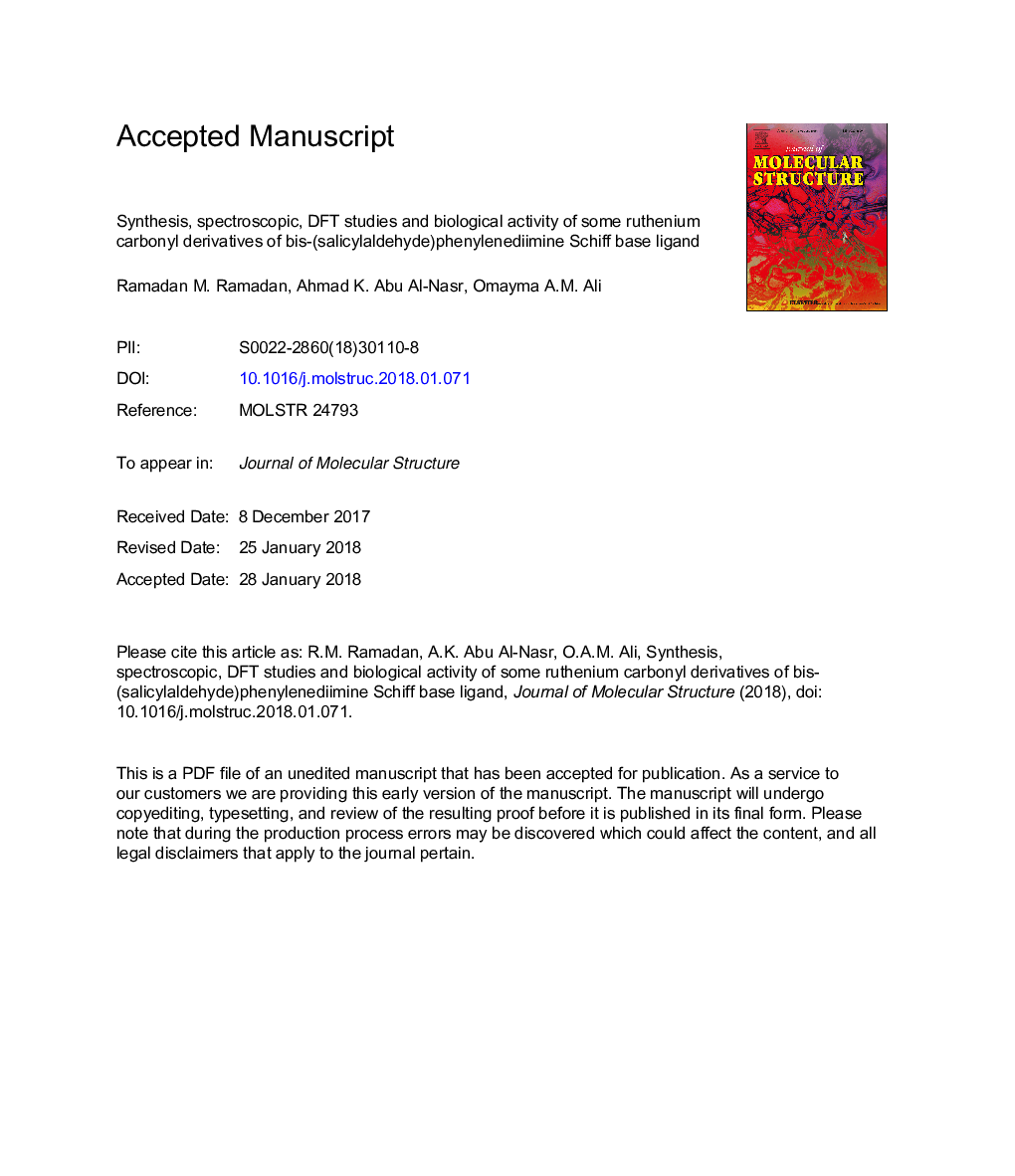| Article ID | Journal | Published Year | Pages | File Type |
|---|---|---|---|---|
| 7807644 | Journal of Molecular Structure | 2018 | 27 Pages |
Abstract
Bis-(salicylaldehyde)phenylenediimine Schiff base (H2salphen) reacted oxidatively with the triruthenium dodecacarbonyl complex, [Ru3(CO)12] to give the dicarbonyl derivative [Ru(CO)2(salphen)], 1. In presence of a secondary ligand L (Lâ¯=â¯pyridine, triphenyl phosphine, 2-aminobenzimidazole or thiourea), the monocarbonyl derivatives [Ru(CO)(salphen)L], 2-5, were isolated. When the bipyridine (bpy) ligand was used as a secondary ligand, the dicarbonyl complex [Ru(CO)2(Hsalphen)(bpy)], 6, was obtained. In complexes 1-5, the Schiff base ligand acted as a tetradentate, while it coordinated as a bidentate in complex 6. The structure and stoichiometry of the complexes were investigated by the conventional analytical and spectroscopic techniques, which revealed that they have several structural arrangements. The structures of ligand and complexes were verified by theoretical calculations based on accurate DFT approximations. The relative reactivities were estimated using chemical descriptors analysis. Biological activities of the complexes against the Escherchia coli and Staphylococcus aureus bacteria were screened.
Related Topics
Physical Sciences and Engineering
Chemistry
Organic Chemistry
Authors
Ramadan M. Ramadan, Ahmad K. Abu Al-Nasr, Omayma A.M. Ali,
